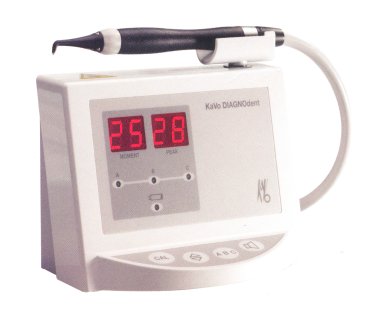This little DIAGNOdent machine had such a profound effect in our office, we bought two! A fresh, sterilized tip is used for each patient and it is calibrated to each patient’s color of enamel before it is used. It has a little laser beam that shoots down in the top part of the teeth where the beginnings of cavities can easily be detected before it can be seen with conventional means. The way it works is that normal tooth structure doesn’t reflect the laser beam back, but decay does! This reflected beam is measures by the machine and assigned a number corresponding to how deep the decay goes into the tooth.
There is nothing more embarrassing than to have a patient come into your office every six months for a check-up and tell them that they now have a big cavity. This is because traditional methods of detecting cavities include looking at the tooth under high magnification with a bright light, sticking a sharp dental explorer into the detectable cavity, and x-rays. Unfortunately, by the time we detect a cavity with the traditional means, the cavity can be quite large. Especially if the decay begins to become active, and the next routine dental x-rays are not due for a year or two. Now with the DIAGNOdent used on every patient getting a cleaning, we have less of a chance of being surprise with a large cavity at your next visit.
Listing the reading for each tooth is a good qualitative way to track teeth from one visit to the next. See “How to Design a Carestream/Kodak PracticeWorks Dental Chart Note: Check for Decay note”.

